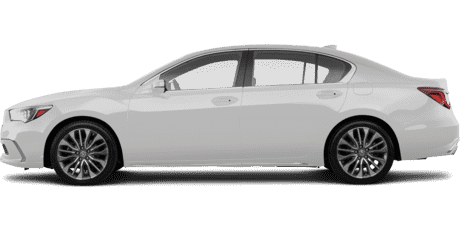There’s a strange technological battle waging among automakers. We say strange because the tech is already there. The battle is more about functionality, legality, and who will be at fault in the event of an accident. We’re talking about autonomous driving tech and the race to offer Level 3 functionality, and now Honda has entered the playing field. More importantly, it could be the first automaker to cross the finish line.
In a press release, Honda announced it “received the required type designation for Level 3 automated driving” from the Japanese government. In short, it means the automaker can offer Level 3 tech on its vehicles for use in certain circumstances. The exact parameters for engaging the self-drive capability aren’t revealed at this time, but according to the press release, rules governing the use of the system are as follows:
The equipment must not cause any concern that compromises the safety of vehicle occupants or other road users under the operable driving environment conditions.
The equipment must not operate unless all required operable driving environment conditions are fulfilled.
Before any of operable driving environment conditions become unsatisfactory, the equipment must warn the driver of the transfer of control (handover) back to the driver and must continue safe driving until the handover is completed. When the handover cannot be made, the equipment must safely stop the vehicle.
The equipment must include a driver monitoring function to monitor the condition of the driver.
The equipment must adopt cyber security measures to prevent security threats such as unauthorized access.
Additionally, a recording device must obtain six months (or 2,500 uses) worth of data showing when the system is turned on or off, when the system issues a handover warning to drivers, and when drivers were in a situation where a handover was not possible. Cars equipped with the system must also have a special sticker identifying them as having automated drive.
If it all sounds a bit complicated and confusing, here’s why. Level 3 autonomous driving technology gives the vehicle full control over driving functions. More importantly, the vehicle allows the driver to go hands and eyes off, but the driver must be ready to assume control at any time. Determining when that hand off takes place, how the driver responds, and whether or not the system can safely control the vehicle in various situations is where the legislative red tape comes into play.
Save Thousands On A New Acura RLX

MSRP $ 55,925
MSRP $ 55,925
Save on average over $3,400 off MSRP* with
Motor1.com Car Buying Service
As we mentioned previously, the technology already exists. Audi was poised to launch Level 3 for its current-generation flagship A8 sedan, but that never happened as Audi encountered too many legal roadblocks. More recently, Mercedes announced its new S-Class sedan would have Level 3 capability in the summer of 2021. Called Drive Pilot, the system is only available in stop-and-go traffic below 37 mph, and only compatible with certain German roads.
With this fresh approval from the Japanese government, Honda now says its system (presently called “Traffic Jam Pilot”) will be offered on the Legend sedan before the end of the fiscal year, which wraps on March 31, 2021. If the automaker sticks to this timeline and encounters no other issues, it will beat Mercedes-Benz to market with a Level 3 system.
Whether it will be similarly limited in speed and location as the S-Class is remains to be seen, but with approval coming from Japan, it likely won’t be offered outside that country anytime soon. We suspect Honda will have more details on its new system in the coming months.
